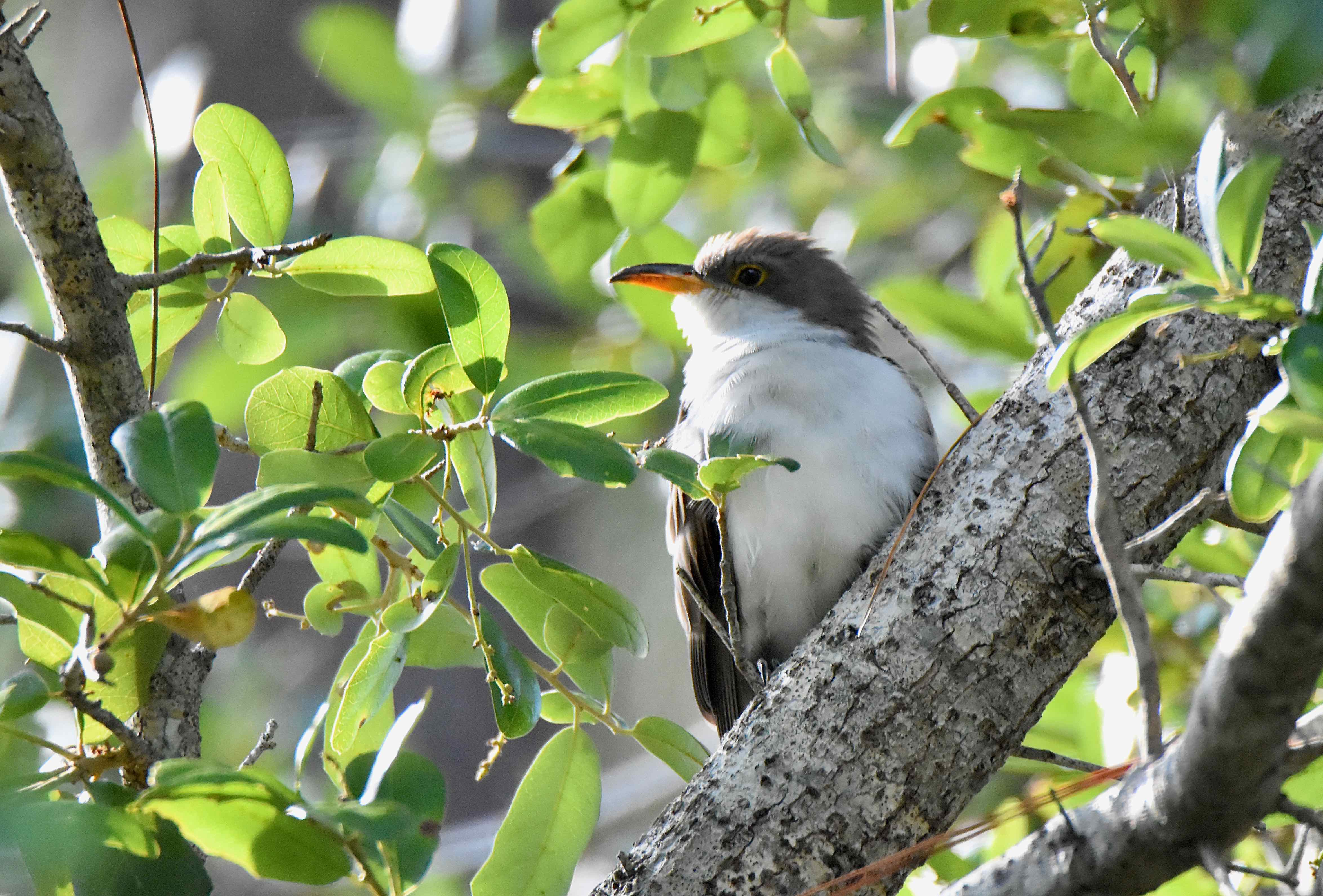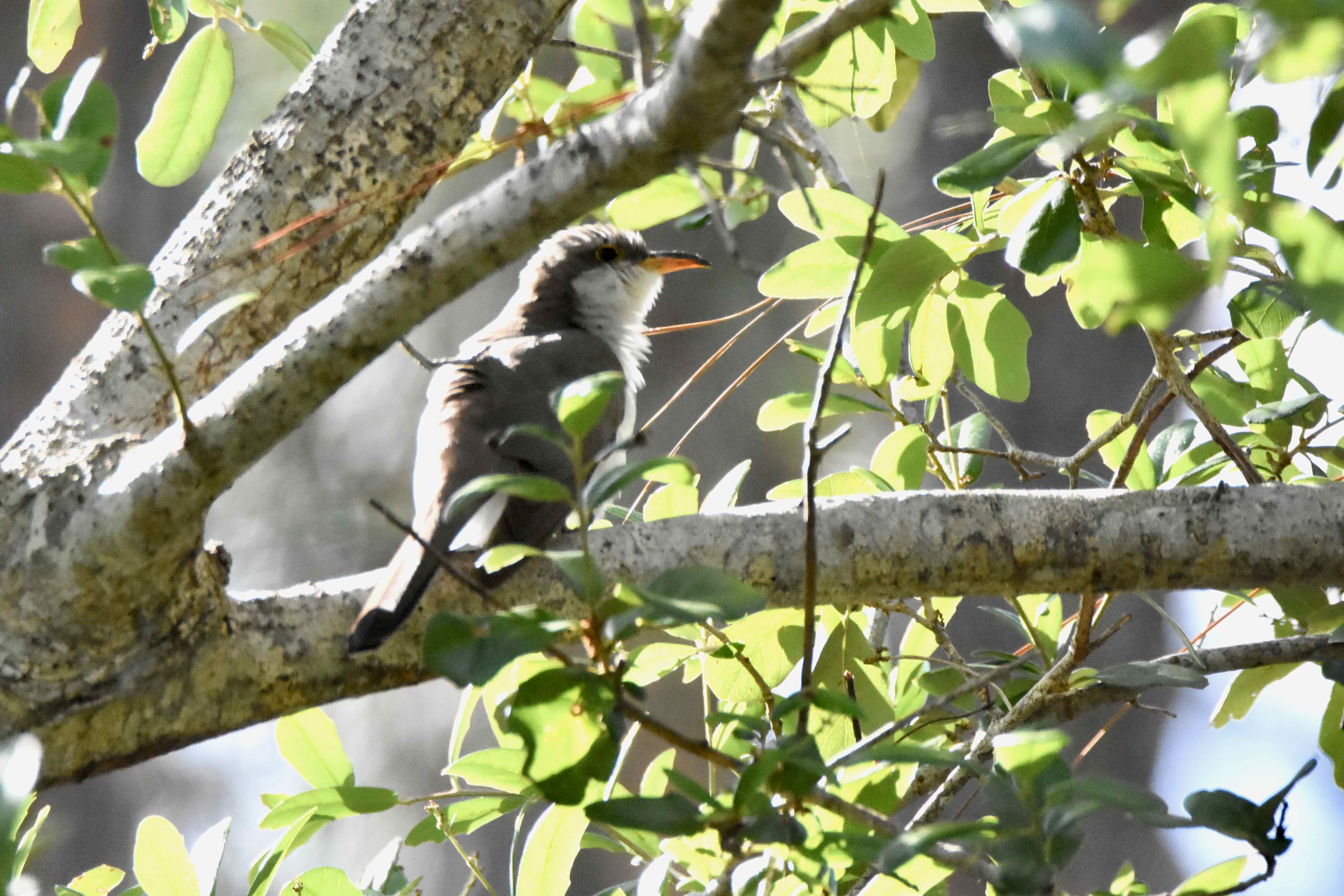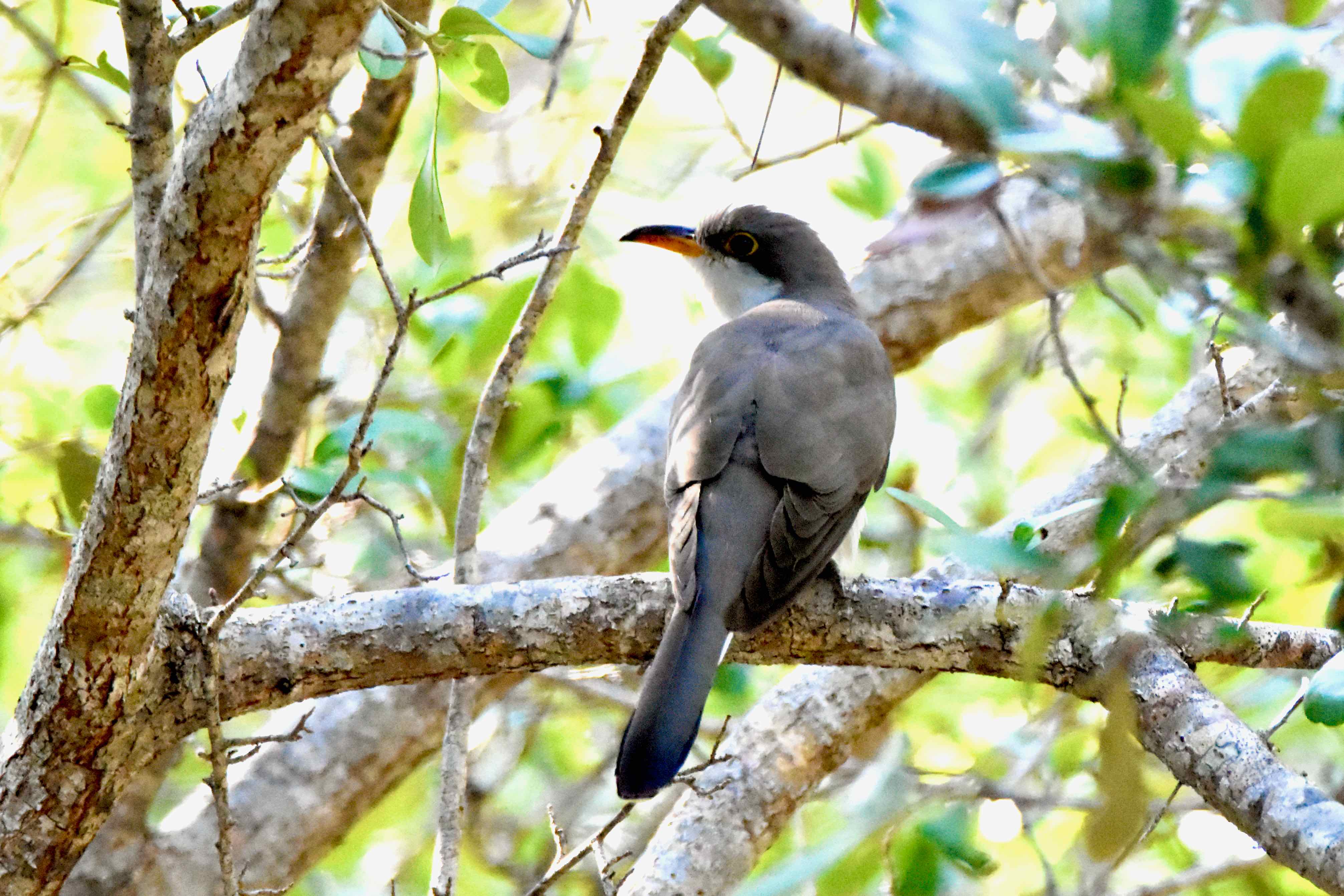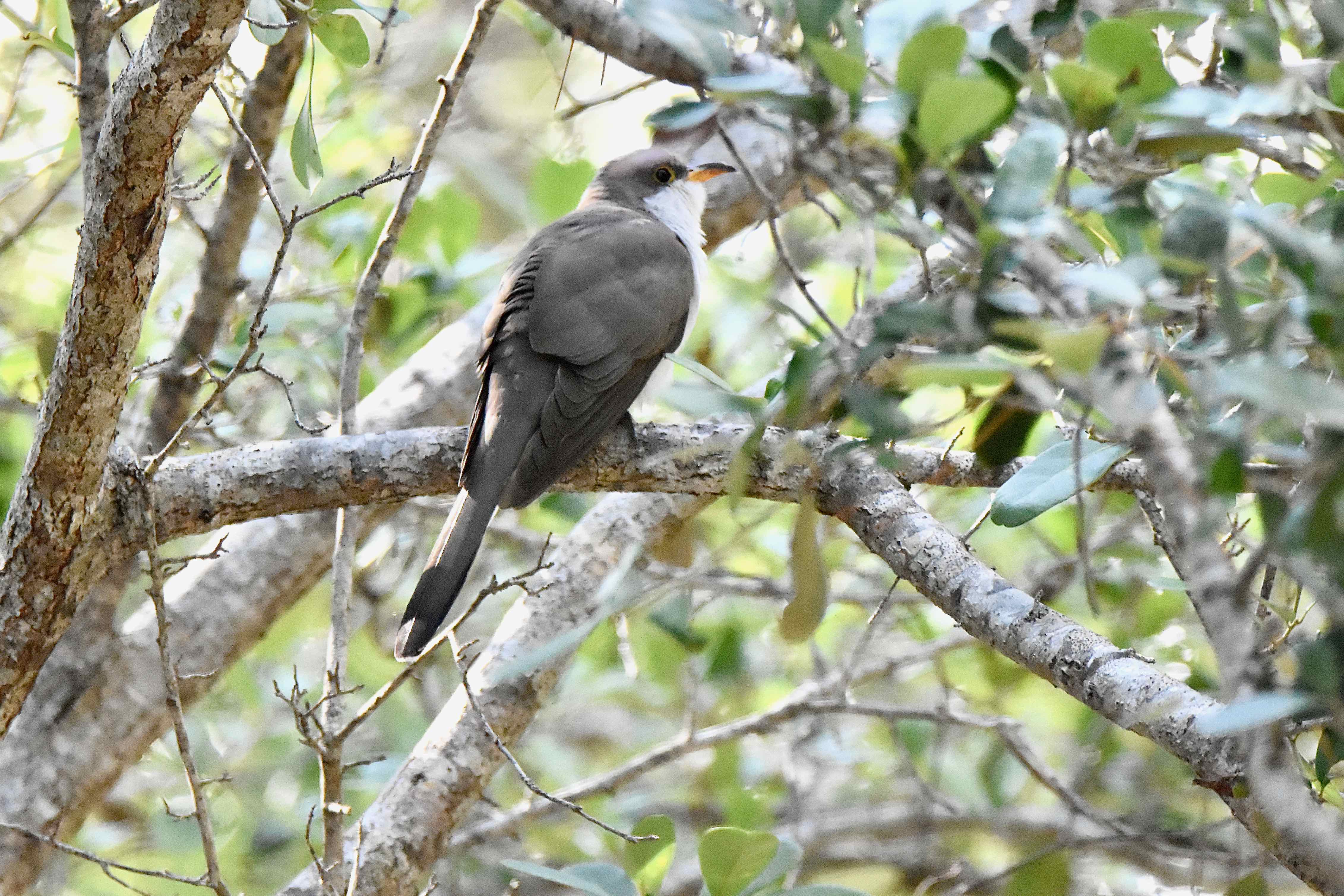
Yellow-billed cuckoo, photographed at Frenchman's Forest Natural Area, Palm Beach Gardens, Palm Beach County, in April 2018.
The yellow-billed cuckoo, Coccyzus americanus, takes shy and retiring to an extreme. It's relatively common in Florida, but its elusive habits makes it uncommonly seen.
For one, it's almost devoid of bright colors other than its yellow-orange bill. It tends to hang out in thickets and forests and doesn't move about a whole heck of a lot, preferring to pick a spot and perch perfectly still rather than fly about. It may call out — it has a distinctive sound — but that might be the only clue that a yellow-billed is in the vicinity. It will go as far as hunching its shoulders to conceal its white underbelly
Yellow-billed cuckoos area migratory visitors to Florida, flying here in late spring to nest, and returning to points south by August. Yellow-billed cuckoos can be found throughout all parts of the state. Their summer range extends over much of the eastern United States as far north as southern New York and northern Pennsylvania and westward to the Great Plains. Yellow-billed cuckoos also nest throughout much of Mexico and the Caribbean.
There is a population that summers west of the continental divide, in the Rockies and into California that some consider a subspecies. But their numbers have dwindled severely as critical habitat has been destroyed, and the bird has vanished altogether from some regions. All cuckoos winter in South America as far south as the pampas of Argentina. They've been known to wander as far north as Alaska and as far east as Europe.
Yellow-billed cuckoos are fairly large, with a body length of nearly a foot and a wingspan of about 17 inches. they have a long, distinctive black tail with six large, white spots on the underside. They are gray above, white underneath, with a black facemask and yellow eye rings. In flight, they flash some red on the outer parts of their wings. Their bills are long, curved, black above, yellow-orange below.
Yellow-billed cuckoos nest throughout Florida; nesting season in the Sunshine State generally runs between May and August.
They nest in trees or shrubs four to 12 feet off the ground. Both sexes build the nest, a saucer-like platform of twigs and roots lined with grass and moss. Yellow-billed cuckoos time their migration and nesting to when their favorite foods should be most abundant — hairy caterpillars, beetles and cicadas.
Typically, mom will lay three or four eggs, more if food is abundant. Unlike most birds, eggs are laid asynchronously — as many as five days can pass between between each egg, meaning the oldest might fledge before the youngest hatches. If food is scare, the youngest might be removed from the nest. The eggs require 9 to 11 days of incubation — both mom and dad do the sitting. The young can clamber about the nest after a week and fly at three.
Dad will continue to care for the first offspring that leaves the nest, mom the last. Females are known on occasion to lay their eggs in the nests of other species, a behavior known as egg dumping. In California, scientists have seen some evidence of cooperative nesting, with three or four adults tending a single nest.
Yellow-billed cuckoos are members of Cuculidae, the family of cuckoos, anis and roadrunners.
Frenchman's Forest Natural Area



